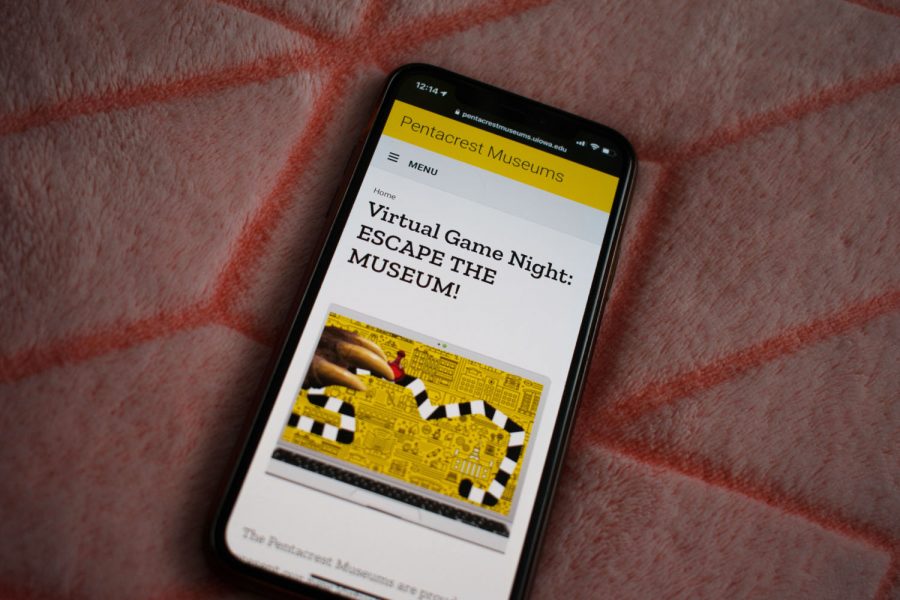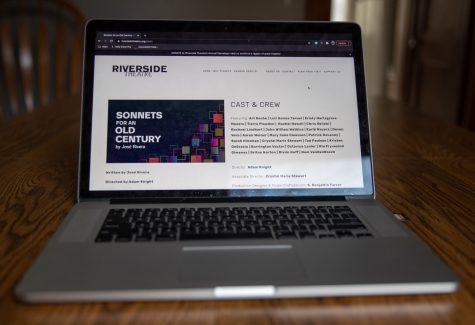Pentacrest Museums turn to mapping software to recreate exhibits virtually
The museum released a digitally recreated version of its Mammal Hall as part of a virtual escape room Wednesday night, using 360-degree mapping software to bring the exhibit to life. Mapping of other Pentacrest Museums exhibits are underway.
April 18, 2021
The University of Iowa’s Pentacrest Museums have begun using 360-degree mapping software to virtually present their exhibits. One, a digital version of The Museum of Natural History’s Mammal Hall, was used in a virtual iteration of the museum’s popular “Escape the Museum” program on Wednesday night.
Student Game Night Program Manager and Museum Education Assistant Jillian Shrader said mapping software has a future in bringing exhibits to life. While the museums have reopened to the public for limited capacity visits, most museum activities continue to be online.
Shrader said the software provides general museum experiences for those who would still prefer a virtual visit to an in-person one, when the museums fully open.
“We do have a couple temporary exhibits already mapped out online, and the entire museum — both the Old Capitol and the Museum of Natural History — are going to eventually be mapped completely virtually as well,” Shrader said.
The museum’s interactive, virtual escape room, themed after the 2006 film Night at the Museum, was the last in a series of four Virtual Game Nights the Museums offered this semester, which allowed visitors to continue to experience the museum and its exhibits safely during the COVID-19 pandemic.
The UI Museum of Natural History’s Mammal Hall is the first permanent exhibit to be fully mapped out. For the escape room, users could explore it by clicking various points and “moving” the camera there. The virtual space also had spots that users could click on to open a window where they could learn about each exhibit, gather clues, and solve puzzles to “escape” the room.
RELATED: Twitch teaching tools: UI professors employ popular streaming platforms for class
A few select prizes were randomly given out to any who participated after the one-hour time limit ran out.
Undergraduate student and Museum Docent Claire Rooney designed and programmed the escape room using a program called Thinglink. The program allows for the connection of objects in real-life environments to digital information about them, creating a self-paced and user-friendly online learning experience.
“I didn’t know what I was getting into, in the best way possible,” Rooney said. “The part that took the longest was mapping the room, that’s what I’ve been calling it, each tag that moves from spot to spot has to be linked up to every other tag. And it just took a while to understand how that worked.”
The use of 360-degree software to map indoor spaces is something the museums hope to utilize to the fullest in the future.
Pentacrest Museums Director of Education and Engagement Carolina Kaufman noted in an email to The Daily Iowan that there are already other upcoming events that will make use of the program, including another escape room event for ESL students on campus, and possible use of the game as a specialized tour experience for elementary to high-school-aged visitors.
“We’re all looking forward to a post pandemic world with more in-person engagement eventually, but virtual learning has a place moving forward either way,” Kaufman wrote. “We’ll incorporate both to accommodate as many high-impact, experiential learning opportunities as possible.”

















